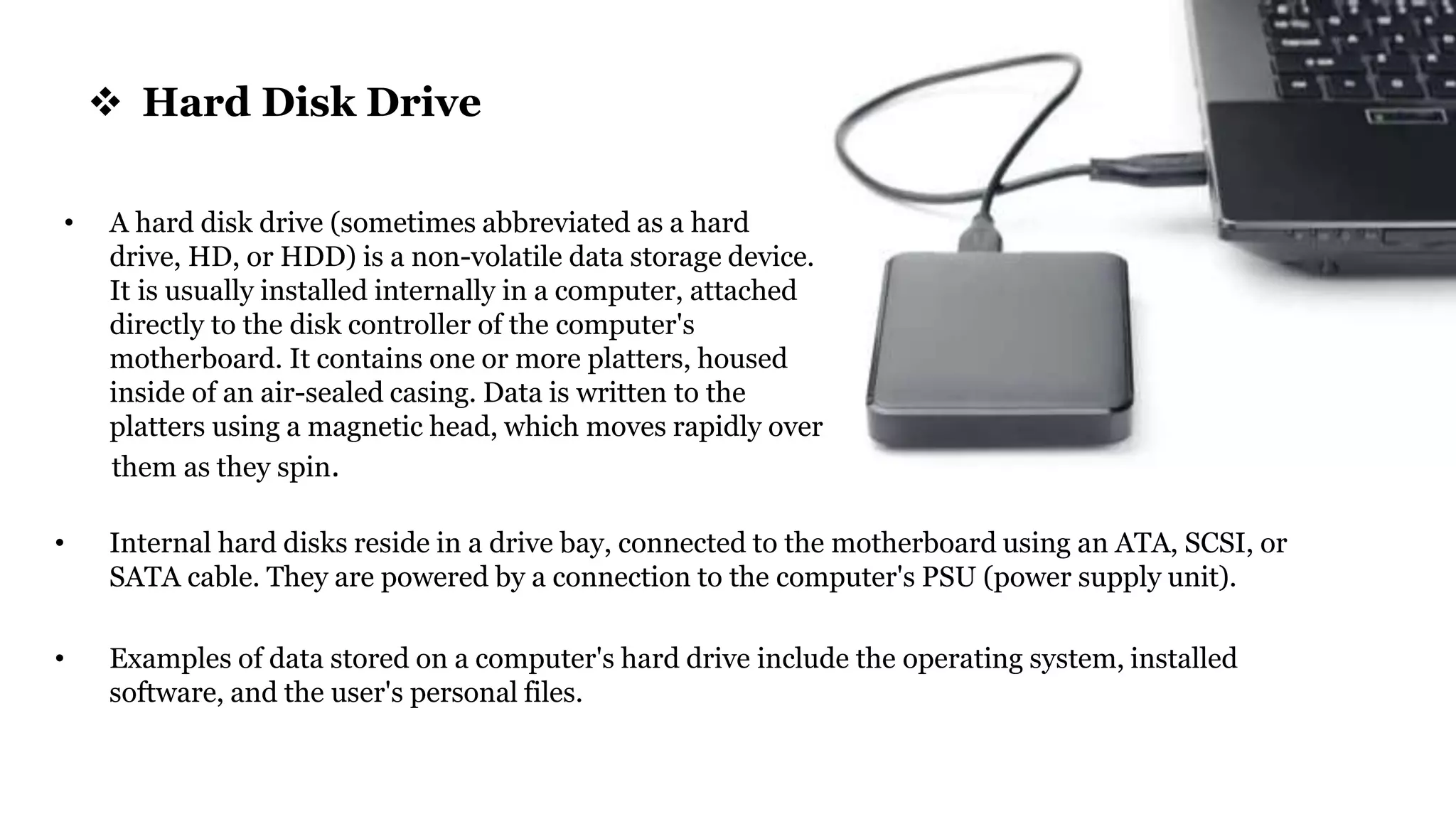The document discusses hard disk drives (HDDs), including their history, components, how data is stored and read, sizes, and their replacement by solid state drives (SSDs). It notes that HDDs contain spinning magnetic platters and a head that reads and writes data by aligning magnetic polarities on the platters. HDDs are found inside computers and connect via cable to the motherboard and power supply. They can store operating systems, programs, files and come in various sizes from hundreds of megabytes to terabytes. Some computers can work without an HDD if booted from another device like a flash drive. SSDs are replacing HDDs due to performance advantages but HDDs remain common due to cost.











